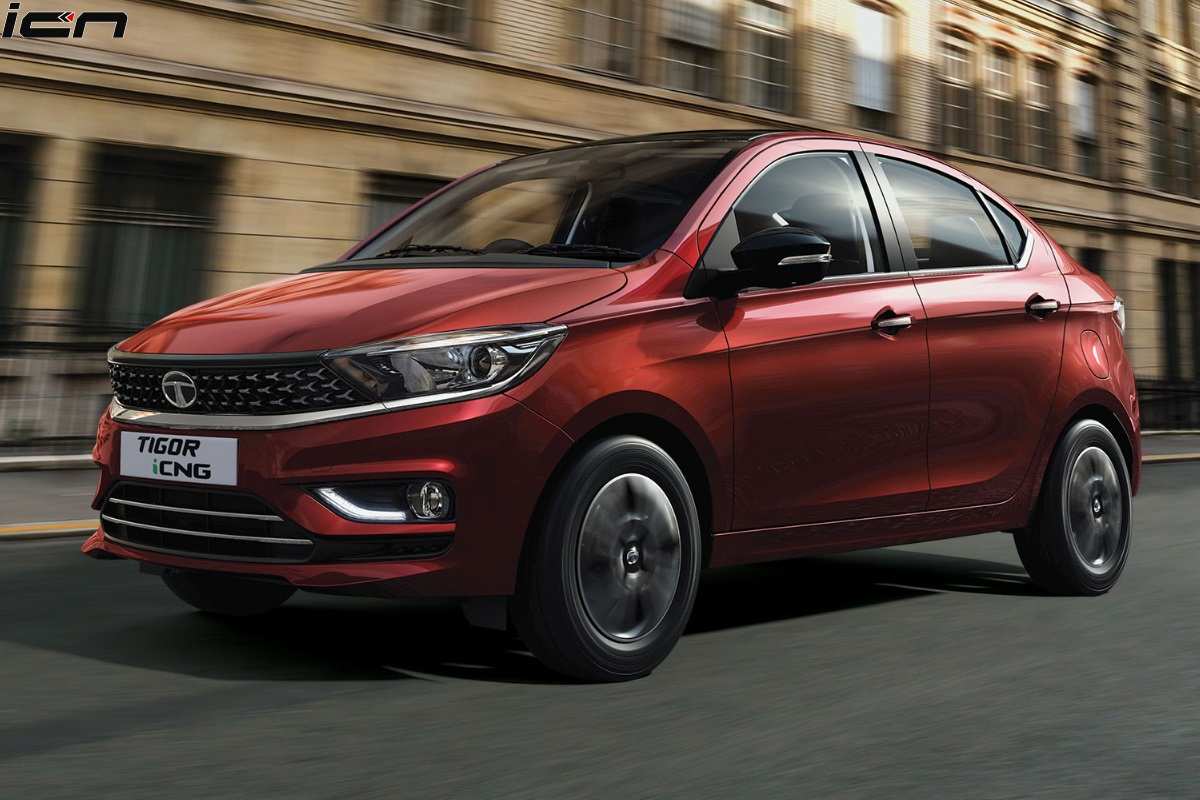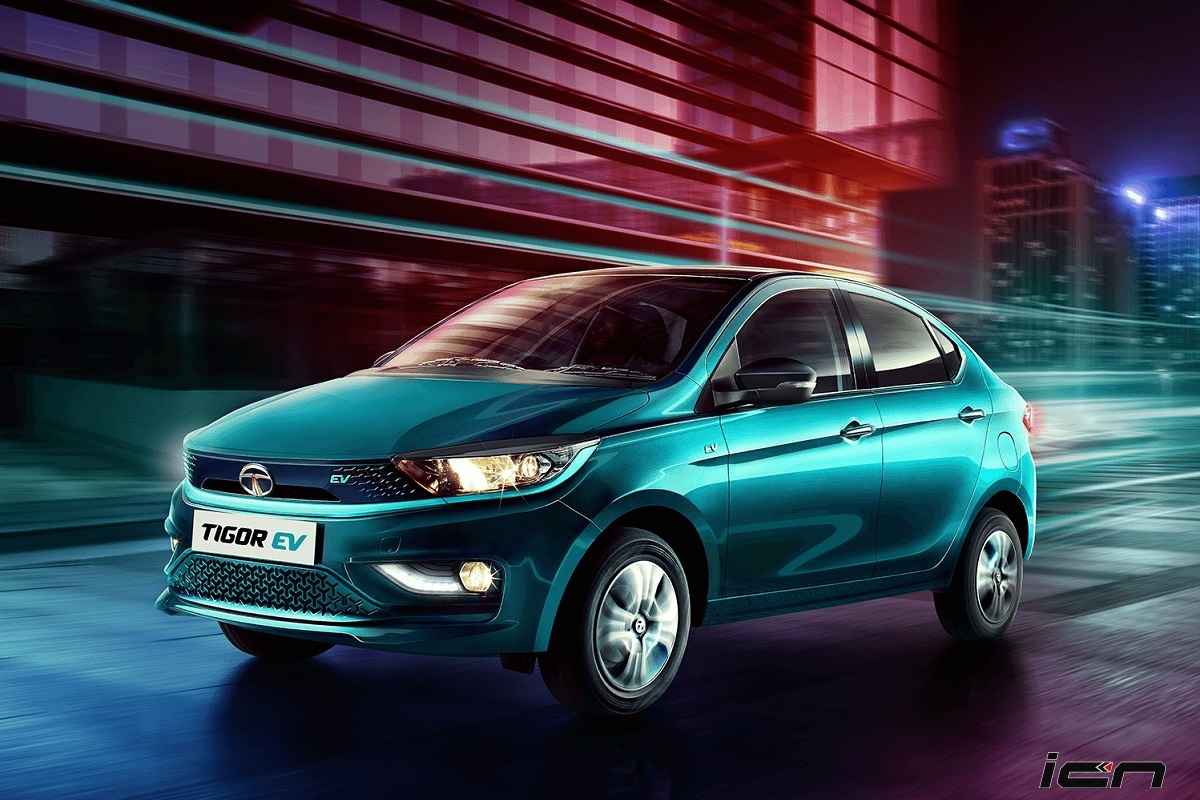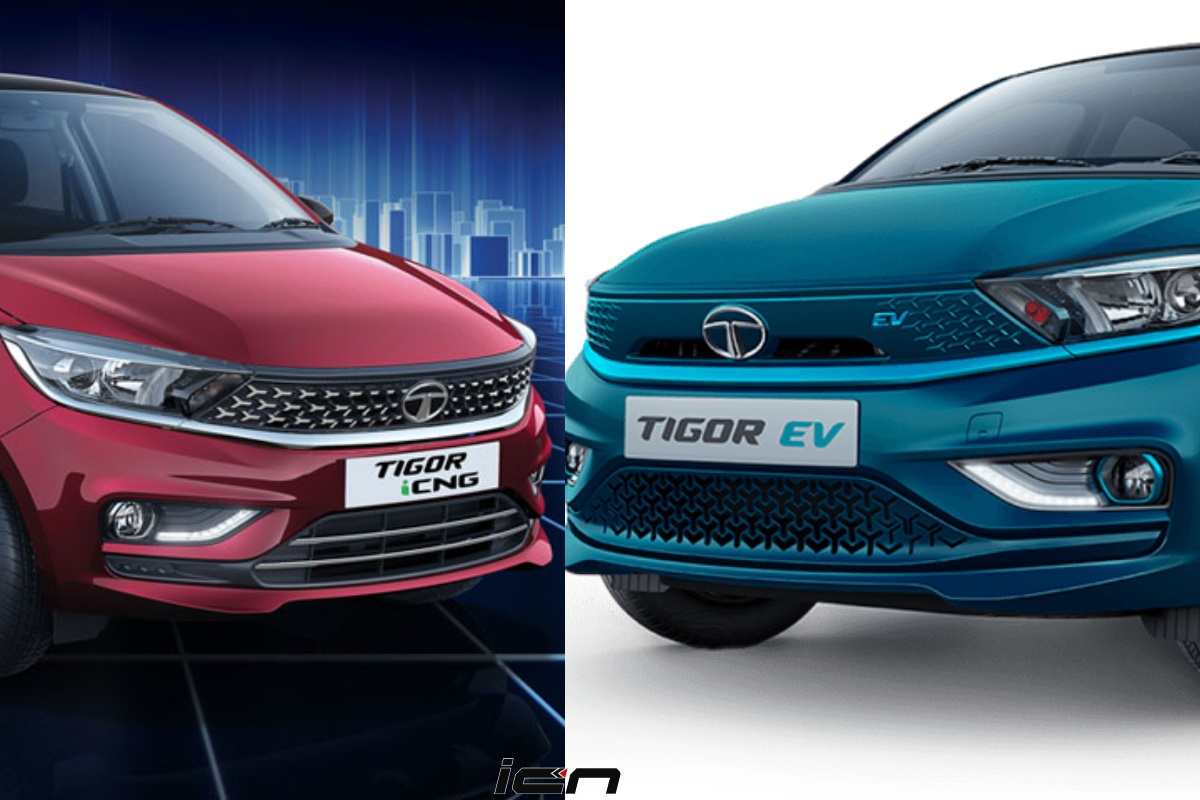CNG and electric vehicles are the two best options for buyers worried about skyrocketing fuel prices. And the Tata Tigor is one of the few cars available in the Indian market that come with all the aforementioned powertrain options. Putting the CNG and electric iterations of the Tata Tigor sub-4m sedan side by side, we find out which one makes more sense in terms of cost and fuel economy. But first, have a look at their dimensions.
Dimensions

The Tata Tigor is 3993mm long, 1677mm wide, 1532mm tall, and possesses a wheelbase of 2450mm. It is the boot space and ground clearance that distinguish the two. With a 10KG CNG tank placed inside the boot, the Tigor iCNG claims a cargo space of 205 litres, which is good enough to fit small/cabin-size bags. On the other hand, the Tigor EV offers 316 litres of luggage space to suit your travel needs. Also, at 172mm, the Tigor EV is 7mm more elevated from the ground to accommodate its under-body battery pack.
Cabin space remains unaffected by powertrain type. However, to accommodate the extra weight of the CNG tank, Tata has made its suspensions a bit stiffer, and hence the surface unevenness feels more inside the cabin as compared to the EV or petrol-only models.
Specifications and Running Cost
| Tigor CNG | Tigor EV | |
| Powertrain | 1.2-litre, 3-cylinder | PMS electric motor, paired with a 26 kWh li-ion battery pack |
| Max Power | CNG mode: 73 PS Petrol mode: 86 PS | 75 PS |
| Max Torque | CNG mode: 95 Nm Petrol mode: 113 Nm | 170 Nm |
| Transmission | 5-speed MT | Single-speed auto |
| Fuel Tank Capacity | Petrol: 35L CNG: Around 10 KG | – |
| Claimed Mileage | 26.8 km/kg | – |
| Claimed Range | About 268 km | 306 km |
| Per KM Running Cost* | Rs 2.93 | Rs 1.57 |
| Average 50km Daily Running Cost | Rs 146 | Rs 79 |
*Based on the CNG price in Delhi (Rs 78.61/kg) at the time of writing this story and the public charging rate at Tata’s EV network (Rs 18.56/kWh).
Note: The above calculations are based on the claimed mileage/range figures and may differ in real-world driving conditions. For reference, the Tigor EV offers an actual drive range between 150-220 km, whereas the Tiago CNG delivers a fuel efficiency of around 17km/kg in city driving conditions.

As the above table reveals, the Tata Tigor EV offers more torque than its ICE version. And being driven by an electric motor, there will be no noise & vibrations, and it will provide effortless acceleration. It will also give you the cost advantage of Rs 1.36/km over the CNG model if you primarily depend on the public charging network. Using a home charger will broaden this gap by a significant margin. Further reducing your overall ownership costs are the maintenance charges of electric vehicles, which is less than half that of ICEs.
However, the EV has certain restrictions, as one must look for a fast charger if it runs out of juice during a trip. And it will take at least 65 mins to charge from 0 to 80% from any 25kW DC fast charger. On the other hand, the CNG can be switched to petrol mode in low gas conditions, and it hardly takes a few minutes to fill up the tank. But finding a CNG pump with a small queue is a big task.
Features
Both the Tata Tigor iCNG and EV are equally well-equipped in terms of features, with notable elements including the projector headlamps, digital instrument cluster, auto climate control, and 7-inch touchscreen with Apple Carplay & Android Auto. However, the electric sedan will soon get multi-level regen braking, leatherette upholstery, TPMS, and more connected car features.
Price Range
| Tata Tigor CNG | Tata Tigor EV |
| Rs 7.40 – 8.84 lakh | Rs 12.49 – 13.64 lakh |
Going by the top-spec variants of the Tata Tigor, the electrified sedan will cost you around Rs 4.8 lakh more than the CNG when the ex-showroom price is concerned. However, it is worth noting that many state governments offer subsidies and registration wavier on EVs that will lower your on-road cost by a significant margin.
Verdict
On paper, both the Tata Tigor CNG and Tigor EV seem excellent alternatives to their petrol counterpart. However, you’ll have to compromise in terms of driveability and ease of usefulness. All-in-all, CNG is an absolute easy-to-run and easy-to-purchase vehicle for everyday use. However, buyers seeking an enjoyable driving experience with no budget restrictions can consider the Tigor EV for urban usage, which will offer you half the running cost of CNG. Using a home charger will further decrease your overall ownership cost.

